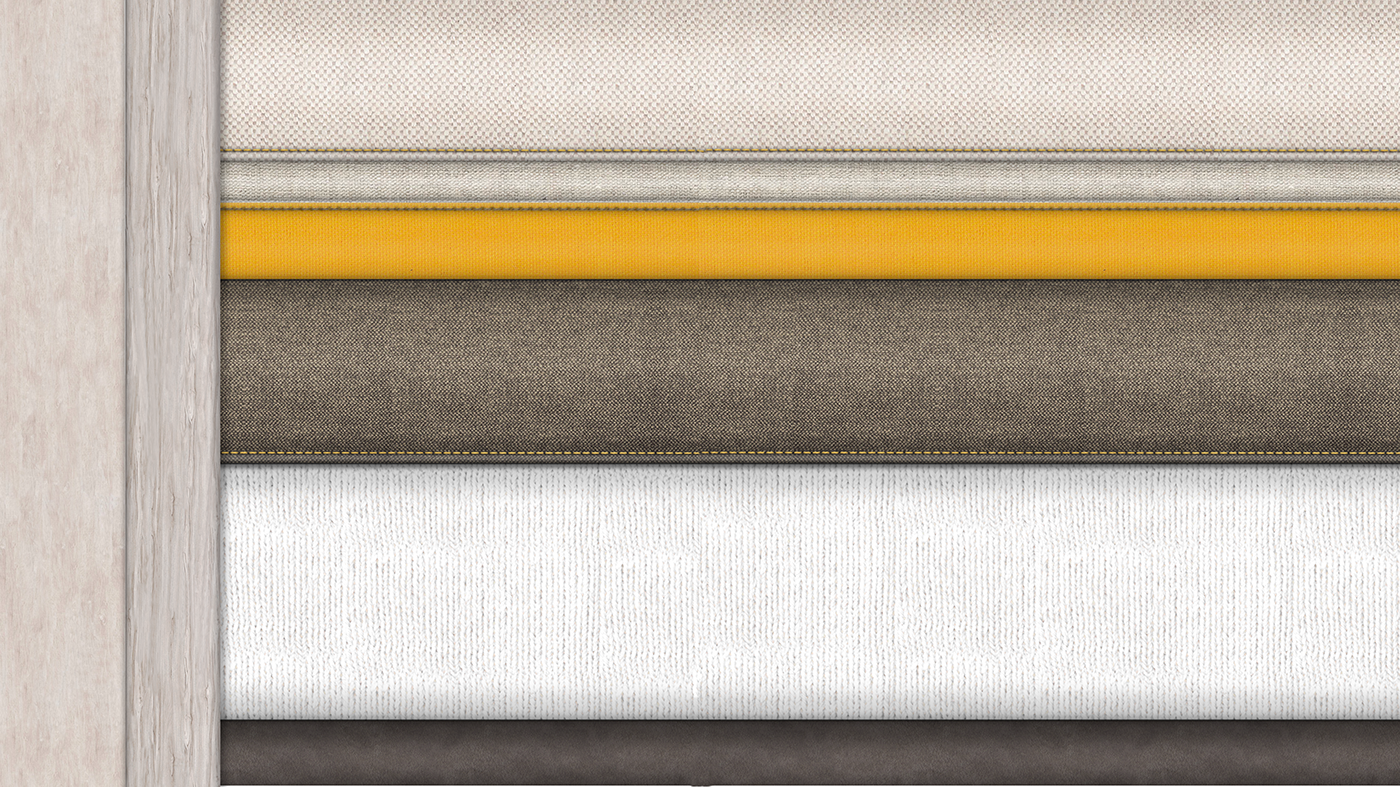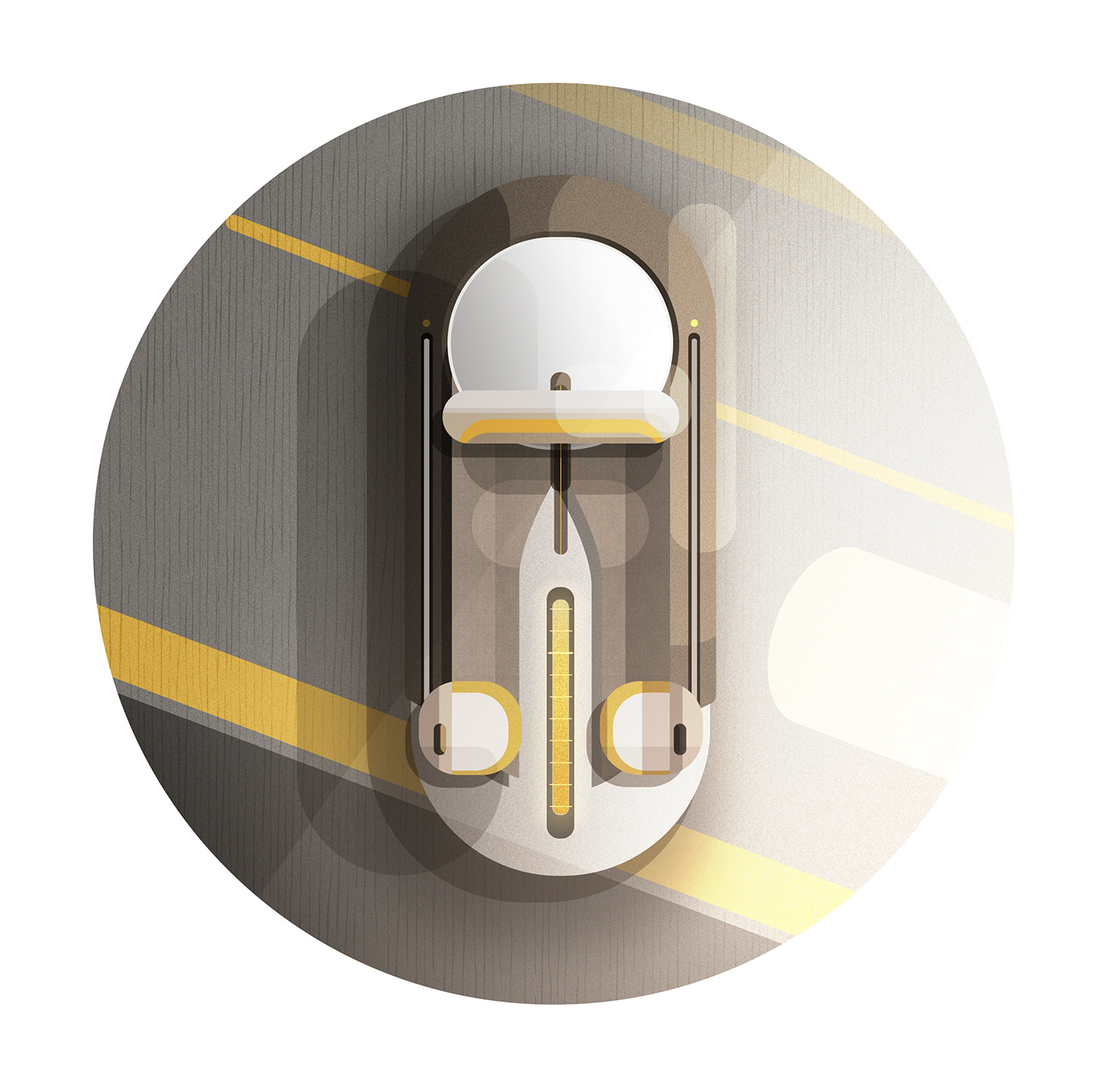RENAULT SAFAIA - FEELING AT HOME
Group Project: Camille BIETTE, Mathilde BALOURDET, Romain L'HERMETTE, César LACOMBE & Thibaud PORCHEROT
________
PART 1 - CONTEXTUALIZATION
During our 4th year at STRATE, we had the chance to take part into a partnership with RENAULT. They gave us a simple but wide brief: "how to feel at home in my car in 2050?"
At first, we began to look for an opportunity to explore in 2050. After some research we chose to focus on the city and on shared vehicles. We had then 3 different contexts: a geographic context, a technical context and a social context.

On top of this prospective context, and seeing what is actually happening in Paris these days, we imagined a specific legislative context. We imagined that in March 2050, the Paris City hall will vote a new law which states that every personal car must be used as « shared » at least 80% of its use (except from exceptional cases).
________
PART 2 - BRIEF ANALYSIS
The next step of our project was to find a meaning for the "feeling at home" sensation. We worked together on different habits we had at home, trying to resume that feeling, looked into several cultures to find common points or differences. We finally summarize the "feeling at home" sensation into 1 word: COEXISTENCE (1st picture). For us, "feeling at home" means living with other people. Coexistence is crucial if you live in a shared house, with friends or even with your family with who there are good and bad relations and dialogues. The edge between the private spaces and the public spaces allow us to respect each other. It is all about learning, discovering, being surprised and enjoy the moment.
But for the coexistence to remain fine, we chose 2 other elements.
The first one is from the asian culture: the FENG SHUI (2nd picture). Feng Shui is a way of life which consists in creating a reenergizing atmosphere thanks to a spatial organisation providing a perfect energy and exchanges circulation. Thanks to its reenergizing and soothing atmosphere a « Feng Shui » shared space (a living room for example) is essential to a well-being as it helps the inhabitants with their relations, discussions and feelings. It also provides a perfect circulation of the « Chi », which is a vital flow.
The second and last element which is important for the coexistence is the notion of EVOLUTION (3rd picture).
It is quite a big concept but we summarized it by saying that evolution is modifications of the habitat and exchanges in different time periods depending on the space appropriation and, external influence and evolution of behaviors. To live in a community is about time. Feeling at home takes time and space appropriation. It goes through an evolution of our behaviors and of our relations with different people. We can talk about a long lasting evolution (for the whole life) or just a repetitive evolution (each day, depending on the hour of the day).



To recap our thoughts, here is a little diagram. For us, the "feeling at home" sensation is about coexistence. In private spaces, we can easily unwind while in public spaces we can exchange and share with other people. Both spaces are crucial for life. To keep the coexistence healthy, we chose 2 tools which are the Feng Shui and the notion of Evolution.

We also thought about RENAULT fighting with others to keep its position in the automotive market, facing the global mobility's revolution. We decided to embody RENAULT by saying that "in 2050, cars won't be just boxes that people use to get from A to B. Cars will include something else, something that should be more inspired by houses. Therefore, people who will need to feel at home will own cars while others will just profit the shared vehicles. Owners will be hosts and others will be invited. Both users will profit from this situation.

________
PART 3 - DESIGN PROCESS
When we had our initial bias defined, RENAULT asked us to built 3 different design concepts.
The first one was a tall vehicle with 2 major levels. The upper level was used in private moments. It was comfortable and evolutive. It could allow the users either to relax or work. When the owner was sitting on this level, it could easily see other people coming in front of the car and welcome them. What was important here was the welcoming ceremony, imagining the owner going down from the upper level to properly welcome its guests, inviting them to go in the bottom level of the vehicle. The bottom level is used while the owner has guests. There, they would talk to each other safely, being face to face or side to side.




Our second concept was more conventional as it had only 1 level. For this one, we took inspiration from asian houses, where rooms are specifically organized depending on their purpose. The more you enter the house (the more you move off the main entrance door), the more the room has a private purpose. Therefore, in our vehicle, there was the welcoming area at the front of the vehicle, then a sharing area, which offered different seating positions and finally a private area, which allows the users to isolate from the rest of the interior. Moreover, thanks to the feng shui, we tried to define specific purpose to specific parts of the car, as a feng shui house would be.






As for the third concept, we tried to imagined a compact vehicle, with also different areas. This interior was more evolutive than the others to combine utility with small package.
We finally chose the second concept for its architecture, knowing that we had to reduce the length of the vehicle.




After choosing our concept base, we had to develop it because we knew the seats weren't very original. We had to find a global theme and we also had to reduce the package, to make a more realistic vehicle. Thus, we imagined other seat architectures, thinking about the notion of welcoming. We took inspiration in the tea ceremony, while people sit on the ground and share a tea. We reproduced that feeling into the vehicle but we realized it wasn't convenient at all to go from this area to the back of the vehicle. Nevertheless, we kept the idea of having an energy source at the front of the vehicle, which symbolized the creation of a new relation that will diffuse into the rest of the vehicle.

Still, we weren't satisfied with the global look of the interior, so we kept on searching and finally found something interesting. The problem of the previous version was its usefulness. When the users are in the welcoming phase, they don't need the others areas; as well as when the users are in the rest of the vehicle, they don't need the welcoming area. So we imagined 2 seats at the front of the vehicle, which can slide to the back to enlarge the family area.


We had then different layouts depending on the needs of the users. We had the middle part with 2 benches, the front part for the welcoming area and the back part for the family.


________
PART 4 - USER SCENARIO
Let's imagine Sven, working in his office in a usual day. At the end of the afternoon, he offers his friend to take him back home with his new car.

Getting inside the car, Sven explains his friend that the aim of the Renault SAFAIA is to rediscover the notion of welcoming of the house inside the car.

Sven then explains the different layouts of the interior.
He also tells his friend about the application and how the system works. It is all about hobbies, likes and dislikes. The application binds together people with common points of interests. It also allows the users to plan their trips depending on people's plannings and business.







________
PART 5 - FINAL DESIGN
















MANY THANKS !
Thank you for your time looking at our project. We hope you liked it !








